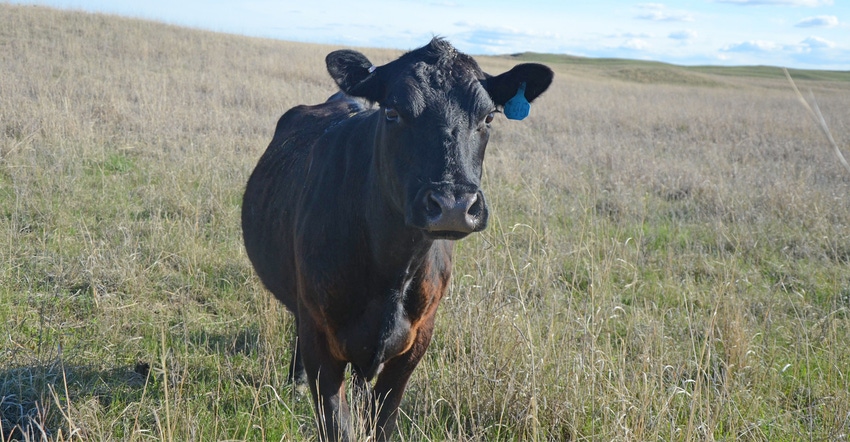January 19, 2017

Spring brings new life to the ranch. There are new babies and fresh, green grass. However, new grass can harbor a new birth of parasites.
When parasites are shed through fecal material, the larvae can overwinter by burrowing down into the soil. These larvae have been known to survive, even in temperatures of minus 40 degrees F, by burrowing deeper into the soil.
When the grass starts greening up in the spring, the larvae move up onto the blades of grass and will infect the cattle as they graze. "As cows eat the larvae, the parasite life cycle continues, and the cows will load the pasture with new eggs that hatch over the summer," says Matthew Cox, Merial sales representative.
As temperatures increase, the metabolism of the larvae will also increase, and the larvae will need to find a host to survive. While spring deworming of cattle can help reduce the parasite levels in pastures, the parasites will reemerge to infect the cattle when the weather warms up.
Most deworming products available only offer 14 to 42 days of protection, Cox says, which isn't long enough to starve off parasites. "No product is 100% effective, so cattle will always have a few parasites," he says. "On an operation, research shows only 10% of the worms will be in the cattle. The other 90% will be in the pasture."
Level detrimental to cattle
What has been difficult to determine is how many parasites it takes to be detrimental to cattle, because every cow and calf is different. "The question becomes how many eggs per gram does it take to start hurting my operation?" he tells producers. "It is a hard question to answer because the metabolic and immune systems differ in each animal.
"Some cows can handle a decent parasite load, while others can't," Cox says. "In some cases, five or six brown stomach worms might start knocking down the efficiency in your operation.”
Cox feels that spring treatment for parasite control is important. "The spring pastures will already be contaminated, so you will want to cut down that growth. Research has shown that by spring-treating cows, they will wean heavier calves," he says.
Cox has heard producers say that their cattle have a shiny or glossy hair coat, so they don't need parasite control. This is a myth, he says. "Hair coat is not a good indicator of parasite load," he states. "A lot of things can cause cattle to have a poor hair coat, like mineral deficiency."
Parasites can also impact the ability of cattle to respond to vaccines. A cow that has been vaccinated against parasites will gain easier and show better body condition. "A healthier, heavier cow will breed back sooner," he says.
Merck has conducted studies looking at the impact of parasite control. In one study of cattle on pasture and in the feedlot, they found that of the cattle that were treated in both places, only 2.5% needed medication of any type.
The group of cattle in the study that received no parasite control had 13.8% that needed antibiotics or medication. "Antibiotics aren't cheap, so if you can cut down on antibiotic use by having healthier, parasite-free cattle, it can save you a lot of money," Cox says.
Clark writes from Potter.
About the Author(s)
You May Also Like




